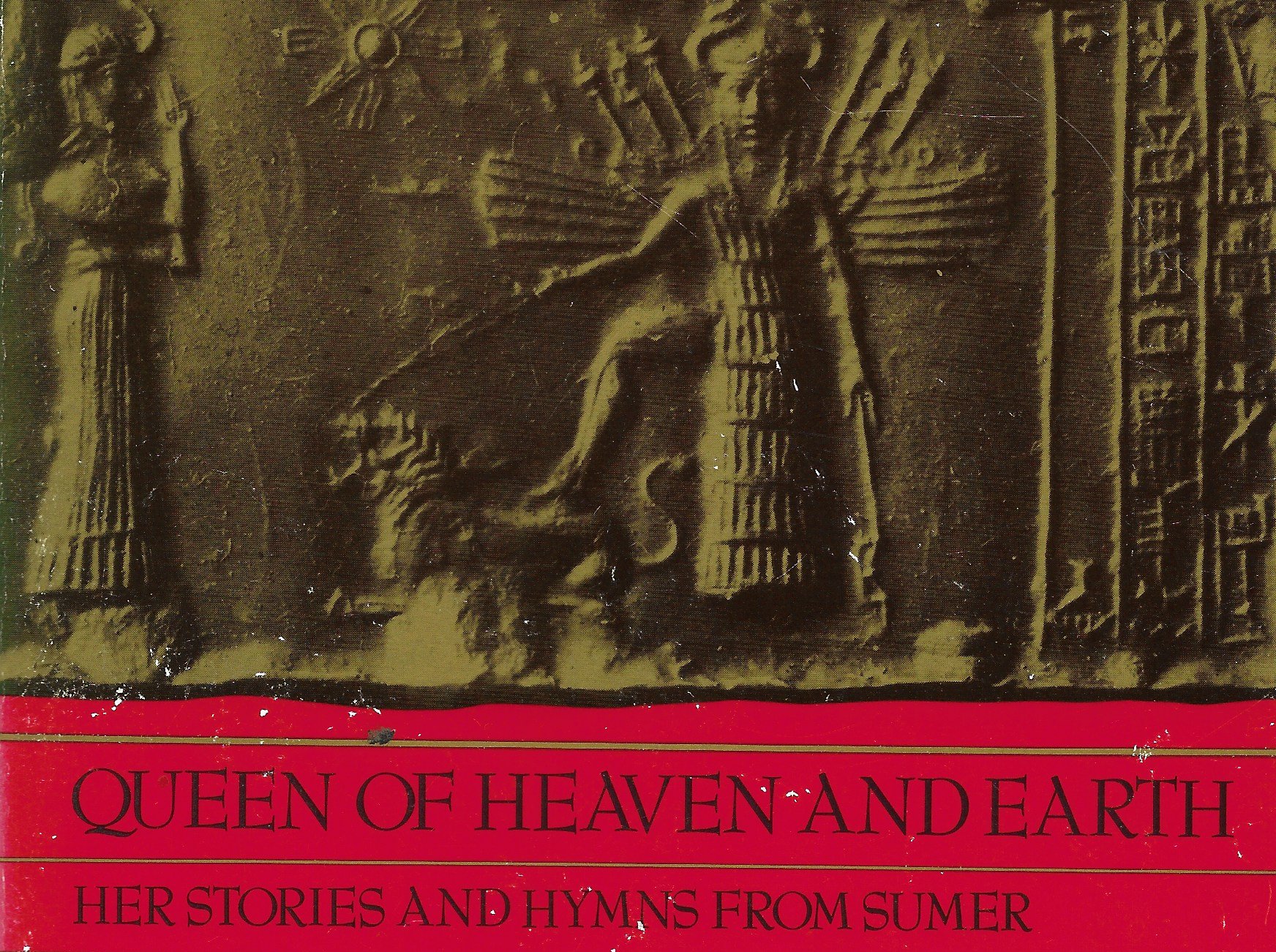Inanna, Queen of Heaven and Earth: Her Stories and Hymns from Sumer
Diane Wolkstein, Samuel Noah Kramer, 1983, Harper & Row, 227 pages with index, trade paperback.
Good, spine creased, pages clean and binding tight.
A fresh retelling of the ancient texts about Ishtar, the world's first goddess. Illustrated with visual artifacts of the period.With the long-awaited publication of this book, we have for the first time in any modern literary form one of the most vital and important of ancient myths: that of Inanna, the world's first goddess of recorded history and the beloved deity of the ancient Sumerians.The stories and hymns of Inanna (known to the Semites as Ishtar) are inscribed on clay tablets which date back to 2,000 B.C. Over the past forty years, these cuneiform tablets have gradually been restored and deciphered by a small group of international scholars. In this groundbreaking book, Samuel Noah Kramer, the preeminent living expert on Sumer, and Diane Wolkstein, a gifted storyteller and folklorist, have retranslated, ordered, and combined the fragmented pieces of the Cycle of Inanna into a unified whole that presents for the first time an authentic portrait of the goddess from her adolescence to her completed womanhood and godship. We see Inanna in all her aspects: as girl, lover, wife, seeker, decision maker, ruler; we witness the Queen of Heaven and Earth as the voluptuous center and source of all fertile power and the unequaled goddess of love.Illustrated throughout with cylinder seals and other artifacts of the period, the beautifully rendered images guide the reader through Inanna's realm on a journey parallel to the one evoked by the text. And the carefully wrought commentaries providing an historical overview, textual interpretations, and aannotations on the art at once explicate and amplify the power, wonder, and mystery embedded in these ancient tales.Inanna--the world's first love story, two thousand years older than the Bible--is tender, erotic, frightening, and compassionate. It is a compelling myth that is timely in its rediscovery.
Diane Wolkstein, Samuel Noah Kramer, 1983, Harper & Row, 227 pages with index, trade paperback.
Good, spine creased, pages clean and binding tight.
A fresh retelling of the ancient texts about Ishtar, the world's first goddess. Illustrated with visual artifacts of the period.With the long-awaited publication of this book, we have for the first time in any modern literary form one of the most vital and important of ancient myths: that of Inanna, the world's first goddess of recorded history and the beloved deity of the ancient Sumerians.The stories and hymns of Inanna (known to the Semites as Ishtar) are inscribed on clay tablets which date back to 2,000 B.C. Over the past forty years, these cuneiform tablets have gradually been restored and deciphered by a small group of international scholars. In this groundbreaking book, Samuel Noah Kramer, the preeminent living expert on Sumer, and Diane Wolkstein, a gifted storyteller and folklorist, have retranslated, ordered, and combined the fragmented pieces of the Cycle of Inanna into a unified whole that presents for the first time an authentic portrait of the goddess from her adolescence to her completed womanhood and godship. We see Inanna in all her aspects: as girl, lover, wife, seeker, decision maker, ruler; we witness the Queen of Heaven and Earth as the voluptuous center and source of all fertile power and the unequaled goddess of love.Illustrated throughout with cylinder seals and other artifacts of the period, the beautifully rendered images guide the reader through Inanna's realm on a journey parallel to the one evoked by the text. And the carefully wrought commentaries providing an historical overview, textual interpretations, and aannotations on the art at once explicate and amplify the power, wonder, and mystery embedded in these ancient tales.Inanna--the world's first love story, two thousand years older than the Bible--is tender, erotic, frightening, and compassionate. It is a compelling myth that is timely in its rediscovery.
Diane Wolkstein, Samuel Noah Kramer, 1983, Harper & Row, 227 pages with index, trade paperback.
Good, spine creased, pages clean and binding tight.
A fresh retelling of the ancient texts about Ishtar, the world's first goddess. Illustrated with visual artifacts of the period.With the long-awaited publication of this book, we have for the first time in any modern literary form one of the most vital and important of ancient myths: that of Inanna, the world's first goddess of recorded history and the beloved deity of the ancient Sumerians.The stories and hymns of Inanna (known to the Semites as Ishtar) are inscribed on clay tablets which date back to 2,000 B.C. Over the past forty years, these cuneiform tablets have gradually been restored and deciphered by a small group of international scholars. In this groundbreaking book, Samuel Noah Kramer, the preeminent living expert on Sumer, and Diane Wolkstein, a gifted storyteller and folklorist, have retranslated, ordered, and combined the fragmented pieces of the Cycle of Inanna into a unified whole that presents for the first time an authentic portrait of the goddess from her adolescence to her completed womanhood and godship. We see Inanna in all her aspects: as girl, lover, wife, seeker, decision maker, ruler; we witness the Queen of Heaven and Earth as the voluptuous center and source of all fertile power and the unequaled goddess of love.Illustrated throughout with cylinder seals and other artifacts of the period, the beautifully rendered images guide the reader through Inanna's realm on a journey parallel to the one evoked by the text. And the carefully wrought commentaries providing an historical overview, textual interpretations, and aannotations on the art at once explicate and amplify the power, wonder, and mystery embedded in these ancient tales.Inanna--the world's first love story, two thousand years older than the Bible--is tender, erotic, frightening, and compassionate. It is a compelling myth that is timely in its rediscovery.
